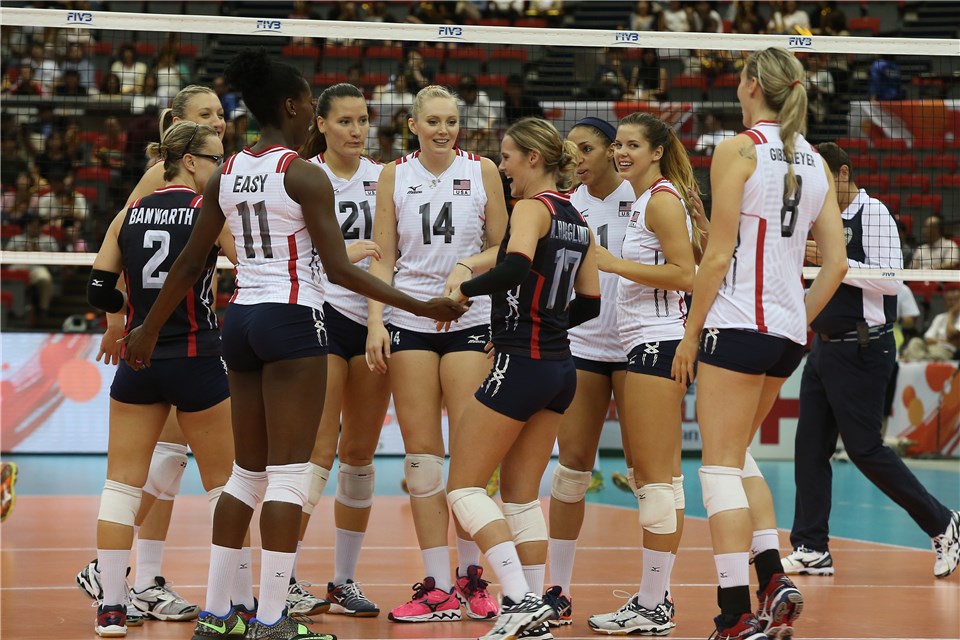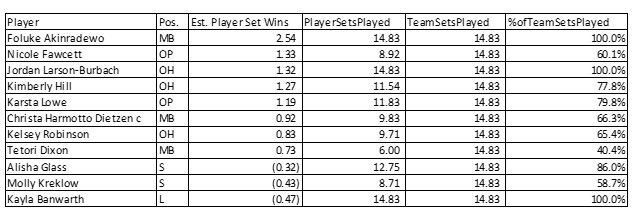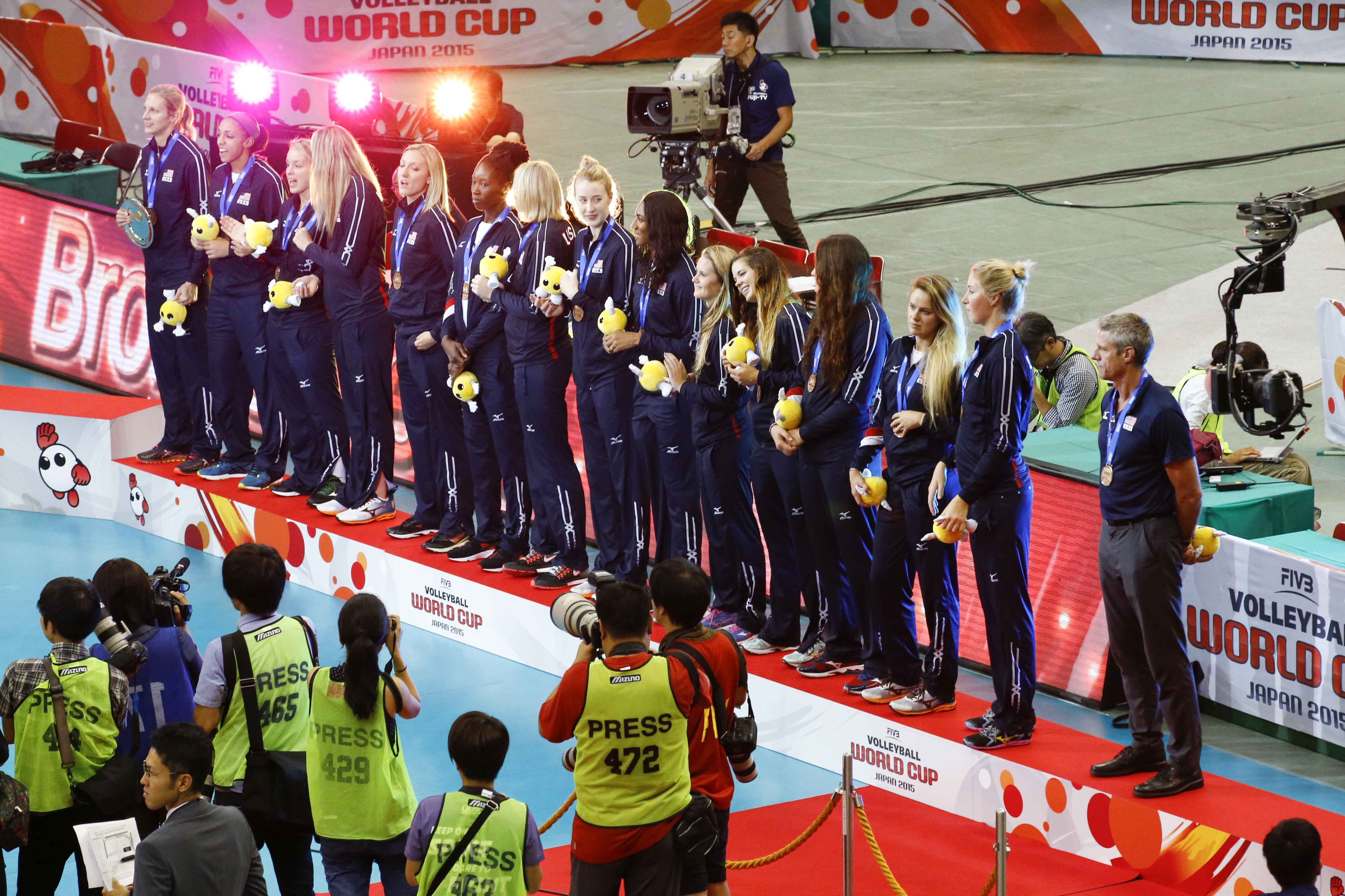Why did the USA Women’s Team Fail to Qualify for the Olympics in Rio?
In watching the tournament over the last two weeks, it become apparent after the first five matches, that the two tickets to Rio were going to go to China, Japan, Russia, Serbia or the USA. The FIVB had scheduled a couple of these matches early in the tournament, but with teams splitting results, China, Serbia beating the USA, the USA beating China, and Russia having to go to five sets against Japan, the margins between the teams were very thin.
The USA actually scored more match points than Serbia, but the FIVB changed the regulations after last year’s world championships to state that wins were the first priority in round robin play, then match points (3, 2, 1, 0 system), set ratio and points ratio. Serbia took the hardest way possible to get their ticket with three 5 set matches. While China took care of business outside of the loss to the USA.
When looking at the USA matches and players in these four specific matches, what happened to cause them to miss?
SERBIA
Against Serbia, the USA had a 2-1 set lead, but failed to hold it and then got dominated in the 5th set 15-6. One reason for the loss with the 30 spiking errors, 22 of which were blocked by Serbia. Rookie Karsta Lowe had 10 hitting errors and finished with a -.030 hitting percentage for the match. Kimberly Hill also had a bad game with 5 hitting errors and a 0.059 hitting percentage. Kelsie Robinson replaced Hill as the starter for the final 3 sets and finished with a .250 hitting percentage, but still with 4 errors.
As for the USA middles had 8 blocks. Christa Dietzen had 5 alone and Foluke Akinradewo had 3 blocks as well. But the middles had 6 hitting errors and a hitting percentage of .241. With the USA not having great play by the middles, it did not help the outside hitters against Serbia.
CHINA
The offense for the USA was incredible against China. Only 10 hitting errors, 5 of which were blocked. Against one of the top teams in the world, the USA knew they couldn’t make mistakes and they didn’t. Nicole Fawcett, Jordan Larson, Hill and Lowe combined for a .545 hitting percentage with 44 kills. With the outsides hitting that well, the middles did not need to do as much spiking, but Akinradewo had 9 kills and a .533 hitting percentage.
USA did not block many balls, 5 in total, and had 7 services errors. However the USA had 49 digs and stopped China offensively. The USA had 15 more spike attempts because of their defense.
RUSSIA
In my mind, this was a winnable match for the USA and to have lost it in 3 sets, it was incredibly frustrating to have watched.
Similar to the Serbia match, the USA kept hitting the ball into the Russia block, 16 times. In a 3 set match that’s more than 5 a set. It is more than most teams can overcome. Hill and Lowe could not keep the ball in the court. Combined these two had 18 kills, but 13 errors on 55 swings. That is a .055 hitting percentage. That is not going to work against Russia.
So, we know that the USA has good hitting middles. Normally the combination of Dietzen and Akiradewo would have kept the USA in the match, but they were also bad with 13 kills, 6 errors on 31 swings a .225 hitting percentage. Tetori Dixon replaced Dietzen for the 3rd set and did much better, but could not turn the tide.
The USA often uses the double switch with Molly Kreklow in the back row to set with Fawcett in the front to spike, but it didn’t gain the USA an advantage like it normally does.
The service line for both teams was almost perfect with only 2 service errors for Russia and 3 for the USA.
The USA was also out dug by the Russians as well, so with the margin for error so tight, the number of errors were 10 in total for Russia and the USA with 13 and the hitting errors meant that this match cost them their ticket to Rio.
JAPAN
Karch Kiraly chose Dixon as one of the middles instead of Dietzen. The USA started out slow and then just hammered Japan in the 4th to win 3-1. Additionally, Karch changed USA lineup after losing the first set. Hill and Lowe went to the bench, while Fawcett and Robinson replaced them.
The USA offense was incredibly balanced in this match with the middles combination of Akinradewo and Dixon with 21 kills, 1 error on 31 swings (.645 hitting percentage) and then the outside hitters of Larson, Fawcett and Robinson with 33 kills, 7 errors on 75 swings (.347 hitting percentage). The offense worked well and kept Japan from using their defense to get back into the match.
Plus the USA block was dominant with 16 blocks (4 per set average) compared to 5 total for Japan. The USA even had 7 aces to Japan’s 2. Additionally the USA did have 11 service errors, but Japan had 10, so it was a wash.
FINAL THOUGHTS
The USA wanted to be the first team have hold the World Championship, World Grand Prix and World Cup titles in the same year. It should have happened, but it didn’t.
The USA in these 4 matches performed below their expectations. They were 3rd in hitting percentage .296 (China was #1 at .340), 4th in blocks per set (2.70, Russia was #1 at 3.90), 4th in aces per set at 1.15, but lead in serve receive efficiency by a wide margin at 53.3%.
Foluke Akinradewo was their best player in these 4 matches with an estimated 2.54 set wins. What is surprising is that Nicole Fawcett was their next best player with 1.33 set wins, and she played in the third fewest sets (Tetori Dixon and Mollye Kreklow were lower in sets played).
If the USA had used Fawcett instead of Lowe, or Robinson instead of Hill, then maybe the result changes. Plus, don’t forget Krista Vansant who played in the World Grand Prix. Karch had a difficult choice to make at the time.
Now the USA had to wait for NORCECA Olympic Qualifying in September 2015, which should be an easy tournament for them, but it would have been unnecessary for them if they had just one more win in Japan.
About The Writer:
Jeremy Brahm played club volleyball in high school in Oregon over 20 years ago. In his first season playing, he played in an exhibition match against the Portland Spikers of Major League Volleyball at his high school. He had the first serve and served an ace on that serve in the match. Sadly the Spikers and the league folded soon after. After becoming interested in advanced basketball statistics, he wondered if it could be applied to volleyball. His advanced volleyball statistics are usually done during FIVB and Olympic events. Additionally, he has created a Ranking System for National Teams using match results for International Matches dating back to 2002 for Men’s and Women’s National Teams. Lastly, he has kept track of the highest scoring matches for men’s volleyball in the rally scoring era.
(images: FIVB)






6 Comments
Leave a Reply